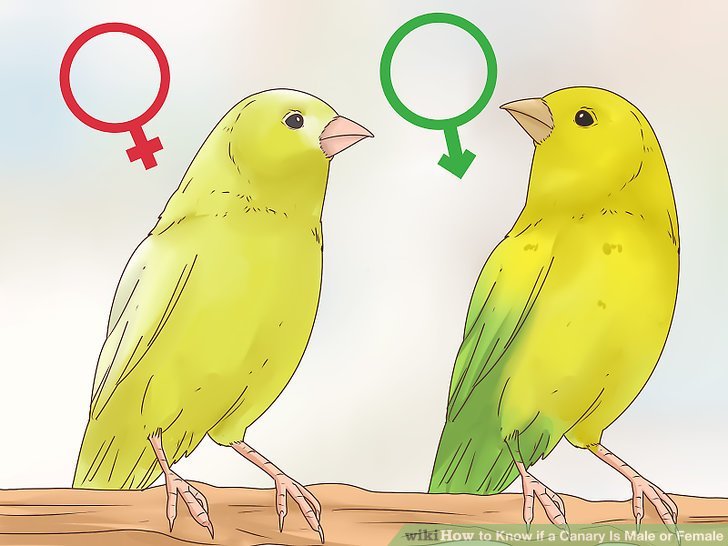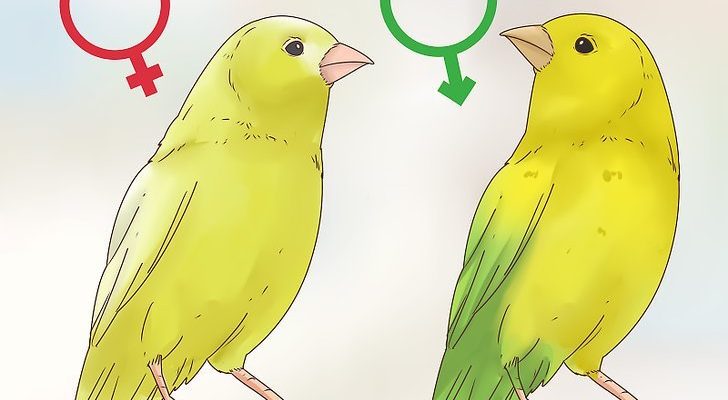
Understanding how to tell the gender of a canary can be as puzzling as untangling a pair of earbuds. It takes a bit of observation and keen eyes, but once you know what to look for, it becomes much clearer. In this article, we’ll explore the various signs that can help distinguish male canaries from female ones, giving you the confidence to identify your pet’s gender.
Physical Characteristics: The First Clue
When it comes to telling the gender of a canary, one of the easiest ways is to look at their physical traits. Generally, male canaries are more colorful and vibrant than females. They often have brighter plumage, particularly during the breeding season. For instance, if your canary is a beautiful, bright yellow with a cheerful aura, there’s a good chance it’s a male!
But color isn’t the only tell. Male canaries tend to have a sleeker build, while female canaries are usually a bit rounder. If you’re trying to figure out your canary’s gender, observe its shape. Think of it like comparing a guitar and a drum—one is sleek, while the other has a fuller body.
Furthermore, males often display a more prominent head. This isn’t just a quirky design feature; it enhances their singing capability, making them stand out during mating displays. So, if your canary has a slightly larger head and shows off its colors, it’s likely a guy!
Behavioral Traits: Listening Closely
Another way to determine your canary’s gender involves their behavior. Male canaries are renowned for their singing ability. If you often hear your canary belting out tunes, that’s a strong hint it’s a male. Males will perform solo concerts, especially during dawn and dusk, claiming their territory and attracting potential mates.
On the flip side, female canaries typically sing less and might even produce a softer, chirping sound instead. So, if your canary spends more time quietly perched and observing rather than singing, it could be a female. You might be wondering, “What if my canary does both?” Well, there are exceptions, and sometimes females can mimic male behavior, particularly if they’re in a mixed environment.
These behaviors aren’t just random; they’re tied to instinct and breeding. Males use their songs as a form of attraction, so if you notice a lively little performer, you’re likely in the presence of a feathered lad!
Color and Markings: The Nuances
While color is often a straightforward clue, it does get more nuanced. In some canary breeds, such as the Gloster or Norwich, the differences between the sexes could be subtle. For instance, certain females might have slightly different coloring compared to males, but they often lack the vibrancy that characterizes male canaries.
Aside from colors, particular markings can also provide hints. Some male canaries develop distinct markings on their heads or wings, which can serve as a signature style of sorts. If you have one of these breeds, take a closer look at any patterns or changes in coloration. Consider it like examining an artist’s signature—certain strokes may help define their uniqueness.
If you’re unsure of the breed, comparing your canary to others online or with fellow enthusiasts can also be a great way to gauge its sex based on its features.
Age: A Factor to Consider
Age plays a significant role in identifying the gender of your canary. Younger canaries, often less than a year old, can be tricky. During their juvenile phase, they often have muted colors and less defined features. This could make it hard to distinguish boys from girls until they reach maturity.
Once they mature—usually around six months—male canaries will typically start showing off their vibrant colors and singing abilities more prominently. Therefore, if you’re trying to determine gender in a younger bird, patience is key. It’s like waiting for a butterfly to emerge from its chrysalis—what starts as a dull caterpillar eventually brings forth beautiful wings!
If you have older canaries, it’s usually easier to tell, but still, be keen on observing the small details as they can change with age.
Using Breeding and Genetics for Identification
If you’re looking to be more scientific in your approach, genetics can provide insight. Certain canary breeds have defined characteristics that can help determine their gender. For example, Cinnamons or Satin Sparrows can have genetic traits that are more pronounced in males. Studying these genetic markers is akin to checking a map before heading out; it sets you on the right path.
Breeding can also influence behavior. If your canary comes from a lineage known for aggressive singing or colorful plumage, it’s more likely you’re dealing with a male. If you have the lineage information, it’s worth exploring these traits as they can guide you toward identifying your canary’s gender more accurately.
Of course, not all canaries come with a pedigree, but even a general grasp of the breed characteristics can help. So, if you think your canary has “star potential,” recognize that genetics can be your ally in figuring out its sex.
Consulting Experts: When In Doubt
Sometimes, even with all the clues, you might still be uncertain about your canary’s gender. In these cases, reaching out to bird experts or veterinarians can give you the clarity you need. These professionals have experience and insight that can help unravel the mystery.
You could also join online forums or local bird clubs, where enthusiasts often share tips and tricks for identifying canary genders. It’s like having a support group for bird lovers—people who understand your questions and challenges. Not to mention, they can offer valuable insights based on personal experiences.
If you’re truly committed to confirming your canary’s gender and perhaps even considering breeding, professional help can take the guesswork out of the equation. Sometimes it’s just about having a second opinion from those who know what they’re looking at.
Telling the gender of a canary can be a delightful journey filled with observation and learning. From examining physical traits and behaviors to considering age and genetics, you’ve got plenty of tools at your disposal. Whichever route you choose, remember that each canary is unique and can bring joy in its own way.
Taking the time to understand your canary’s traits not only enhances your bond with them but also enriches your experience as a bird owner. So, whether you’re dealing with a little singing star or a quiet companion, enjoy the quirks and charms that your feathered friend brings to your life!

